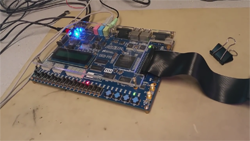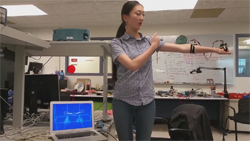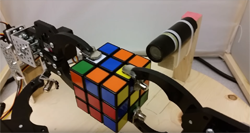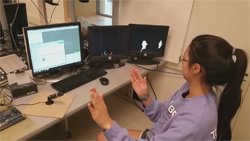ECE 5760 Contents
Syllabus and Course Details
Lecture Notes and Handouts
Projects and Labs
Note: Homework and Exams are not available for this course.
Course Description
ECE 5760 deals with system-on-chip and embedded control in electronic design.
Instructor(s)
Bruce Land
214 Phillips Hall
Tel: 607-255-7994
Email: BRL4@cornell.edu
Course Level
Graduate (M.Eng.)
As Offered In
Spring 2017
Required Text(s)
- Policy [PDF]
- Tektronix TDS1002 oscilloscope manual [PDF]
- B&K 4040a signal generator manual [PDF]
- DE1-SoC Users Manual [PDF]
Course Structure
The course consisted of:
- Three lectures a week
- Lab section every week
- Final project



